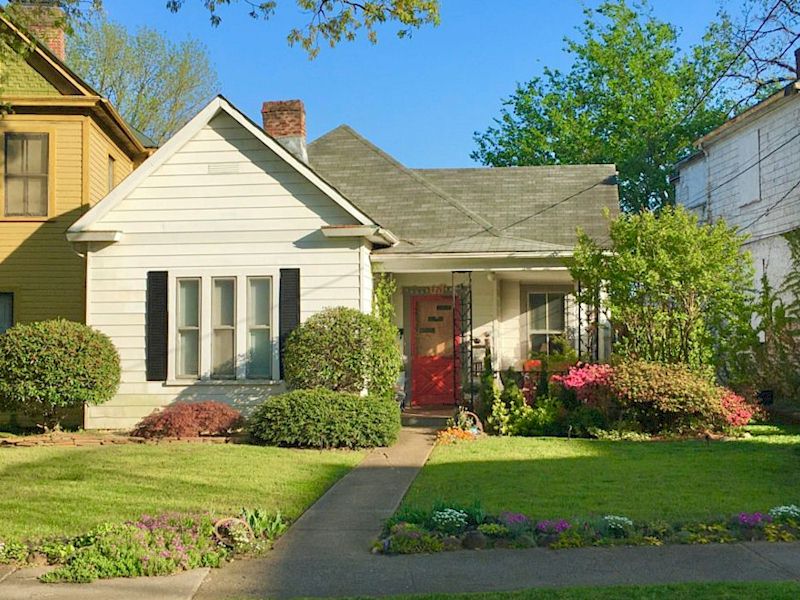The house at 935 Green Street was likely built in 1902. One year earlier, the “lot of land” had been sold to Lee M. Ligon by W. W. Ayres for the sum of $600. In September of the following year, it was sold again, this time “with improvements thereon” to W. G. Catlin for $1,750.
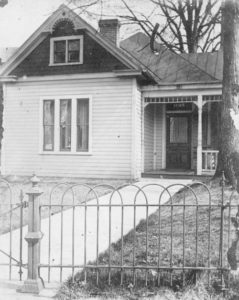 W. G. Catlin’s father, James Thomas Catlin, was the second in the family to arrive in Danville. James was born in Richmond, Virginia in 1852. He was the eldest of eight children born to William A. Catlin and Rebecca Allen. As a young man, James Catlin moved to Savannah, Georgia. He was first a man of business, and, while employed in Savannah, he met Eleanor Greenwood of Norfolk, Virginia. The couple were married in 1877. Business took him to Newburg, New York, where he worked with a large implement manufacturing company. In 1888, he arrived in Danville, where his brother had set up an insurance business. With very little competition, his business, which specialized in fire insurance, prospered.
W. G. Catlin’s father, James Thomas Catlin, was the second in the family to arrive in Danville. James was born in Richmond, Virginia in 1852. He was the eldest of eight children born to William A. Catlin and Rebecca Allen. As a young man, James Catlin moved to Savannah, Georgia. He was first a man of business, and, while employed in Savannah, he met Eleanor Greenwood of Norfolk, Virginia. The couple were married in 1877. Business took him to Newburg, New York, where he worked with a large implement manufacturing company. In 1888, he arrived in Danville, where his brother had set up an insurance business. With very little competition, his business, which specialized in fire insurance, prospered.
In his success, James established the Citizen’s Bank, once located at the corner of Bridge and Main Streets. It was within the bank he eventually maintained his insurance office while simultaneously working as cashier of the bank under president John E. Schoolfield and vice president T. B. Fitzgerald. In 1905, Citizen’s Bank merged with First National Bank. Mr. Catlin then turned his full attention upon his insurance business, partnering with his eldest son William Greenwood Catlin.
It’s unclear if or when W. G. Catlin resided in the home. He likely did in its earliest years, but as he prospered, it’s possible the home became investment property. In 1906, the Catlins sold the home to Lizzie W. Broaddus who maintained a farm in Essex County, but it was as early as 1904 that the home was occupied by renters. The first of these was the Loomis family.
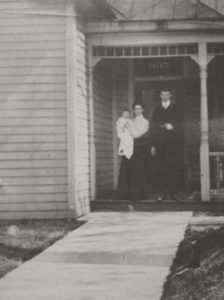
Born in Hartford County, Connecticut, in 1876, Emerson R. Loomis arrived in Danville at the age of fifteen. He was married twice, first to Effie A. Puller in 1896 (later divorced) and then Mabel McCully in 1902, with whom he shared the Green Street home. The couple also shared a love of photography. When Mr. Loomis passed away in 1910, many photographs of his own taking were found in his possession. His wife, Mabel, went on to make a career of it.
Mr. Loomis, in the years prior to his death, worked as the chief electrical engineer for the American Tobacco Company. His health began to fail in 1906, and so the family moved to New Mexico where the air was dryer and the weather – or so the couple hoped – would be more conducive to aiding Mr. Loomis in his struggles against tuberculosis, a condition he had for some time.
New Mexico’s The Tucumcari News described Mr. Loomis in glowing terms. “He was one of those rare spirits,” his death announcement in 1910 read, “that live in an atmosphere where narrowness, selfishness, and avarice are not known, but where honest, manliness and integrity are dynamics of the soul. No one ever heard him speak ill of a human being.” He was thirty-three years of age.
Following her husband’s death, Mabel Loomis took work with photographer Leon N. Taylor, becoming his assistant, and thereby making herself the first known female photographer in Danville.
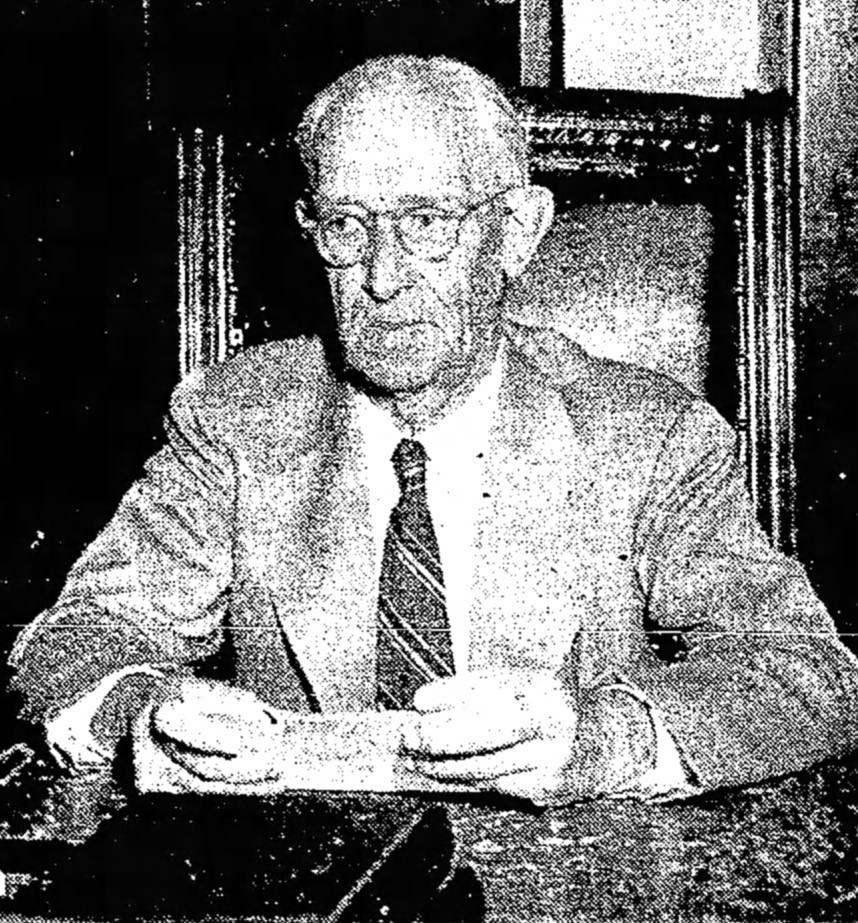
The next family to rent from Mrs. Broaddus was Charles K. Carter who lived here with his wife Alice and their three children. Mr. Carter identified himself on the 1910 census as a machinist in a foundry. Born in Danville in 1879, Mr. Carter was a young man when the automobile first began to appear as a mode of travel that might take hold. His fascination led him eventually to open the first automobile shop in Danville, located on Craighead Street and in which shop he was the first sales agent in the city. The automobiles of his day were slow and strange, some running on petrol at a whopping ten miles an hour and others running on steam. Carter became so proficient at running and operating steam powered automobiles that he opened a foundry and began inventing driving machines of his own.
Carter was a man of progressive ideas and longed to make a difference in the community, and so, in time, the call of civil servant beckoned him. When Harry Wooding ran for reelection in 1924, Mr. Carter stood to oppose him. Captain Wooding won, but the margin was slim. Only two votes divided Mr. Carter from mayorship. Rather than contesting the vote, the two men agreed to split the leadership. 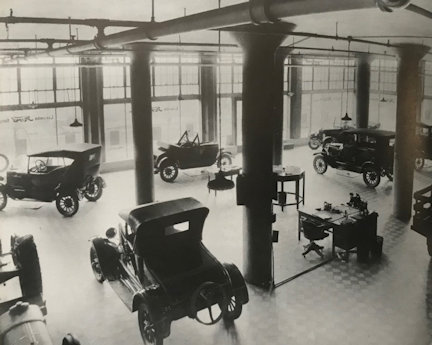 Wooding would serve as mayor while the position of police magistrate would go to Mr. Carter. According to The Bee following Mr. Carter’s death in 1945, Magistrate Carter was known for his “Solomon-like decisions” and was “a social reformer with his own practical ideas, many of which he saw succeed handsomely”. Mr. Carter was married twice, first to Alice Norman, with whom, along with their three children, he shared the Green Street home. After Mrs. Carter died in 1937, he remarried. His second wife was Margaret Elizabeth Tatum, his junior by nearly thirty years. She outlived him by fifty.
Wooding would serve as mayor while the position of police magistrate would go to Mr. Carter. According to The Bee following Mr. Carter’s death in 1945, Magistrate Carter was known for his “Solomon-like decisions” and was “a social reformer with his own practical ideas, many of which he saw succeed handsomely”. Mr. Carter was married twice, first to Alice Norman, with whom, along with their three children, he shared the Green Street home. After Mrs. Carter died in 1937, he remarried. His second wife was Margaret Elizabeth Tatum, his junior by nearly thirty years. She outlived him by fifty.
During World War II, Mr. Carter’s knowledge of automobiles led him to be appointed chairman of the transportation division of the Danville OPA, the Office of Price Administration, or what was otherwise known as the ration office overseeing the distribution of tires predominantly. Mr. Carter served as city Magistrate for 21 years, trying an estimated 70,000 cases during his career, a career which he maintained up until the time of his death.
The Blair family were next to occupy the house and lived there during the 1920’s. Not much is known about the Blairs except that Mr. Blair was born in Pittsylvania County in 1875 and married Willie Evelyn Harvey in 1906. Mr. Blaire was identified as a bookkeeper on the 1920 Census. The family later moved to 155 Holbrook Avenue where they shared the house with their adult son William Jr., a draftsman with an engineering firm. Mr. Blaire died in 1944 of Hepatitis and his son died four years later of a heart attack.
By 1930 the Bennett family occupied the Green Street home. John T. and Mamie Bennett were in their sixties when they resided at 935 Green Street. Mr. Bennett was an agent in a soap company. Sometime before 1940, the couple separated. Mr. Bennett spent his last years on his farm in Pittsylvania County where he suffered from “senility.”. On the morning of February 6, 1947, he fell from his bed and punctured his lung. He died two days later when pneumonia set in.
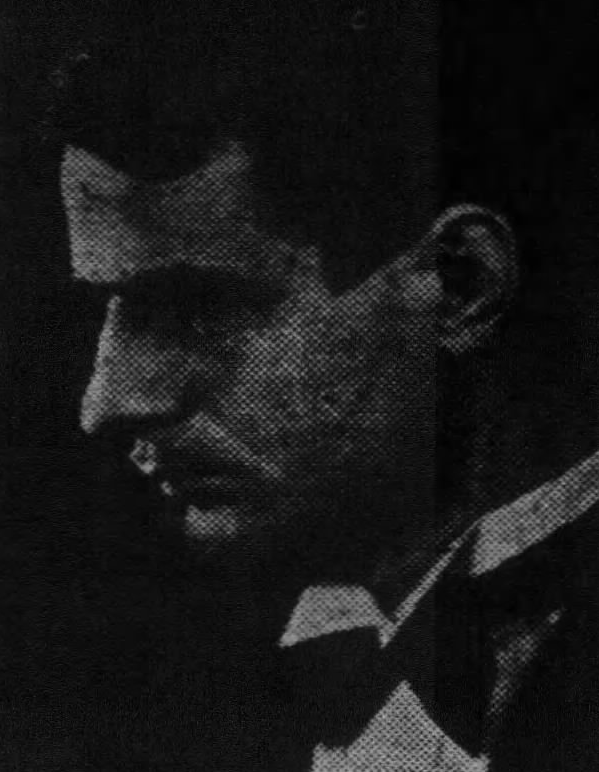 For a period of time in the 1930’s and 1940’s, 935 Green Street was the home of Raimonde and Martha Carrington Aubrey. Like the Loomises, Mr. Aubrey was from Hartford, Connecticut, and both he and Mrs. Aubrey were artists, though the Aubreys were singers rather than photographers. Mr. Aubrey, in his early musical career, toured the country in musical productions including The Vagabond King and the Beggar’s Opera. Eventually he took a position at Brenau College in Gainsville, Georgia and then moved to Danville around 1930 when he became the director of the Danville Choral Club. Mr. Aubrey sang locally, sometimes with his wife and to large crowds and taught singing lessons from his home. He even had the honor of being reported on several occasions for disturbing the peace when neighbors complained of the noise emanating from his home during an evening’s practice. Eventually the Aubreys moved to Pennsylvania. Mr. Aubrey was married a second time to a fellow performer in the Johnstown Symphony Orchestra of which he was later a part. Mr. Aubrey died in Pennsylvania in 2000.
For a period of time in the 1930’s and 1940’s, 935 Green Street was the home of Raimonde and Martha Carrington Aubrey. Like the Loomises, Mr. Aubrey was from Hartford, Connecticut, and both he and Mrs. Aubrey were artists, though the Aubreys were singers rather than photographers. Mr. Aubrey, in his early musical career, toured the country in musical productions including The Vagabond King and the Beggar’s Opera. Eventually he took a position at Brenau College in Gainsville, Georgia and then moved to Danville around 1930 when he became the director of the Danville Choral Club. Mr. Aubrey sang locally, sometimes with his wife and to large crowds and taught singing lessons from his home. He even had the honor of being reported on several occasions for disturbing the peace when neighbors complained of the noise emanating from his home during an evening’s practice. Eventually the Aubreys moved to Pennsylvania. Mr. Aubrey was married a second time to a fellow performer in the Johnstown Symphony Orchestra of which he was later a part. Mr. Aubrey died in Pennsylvania in 2000.
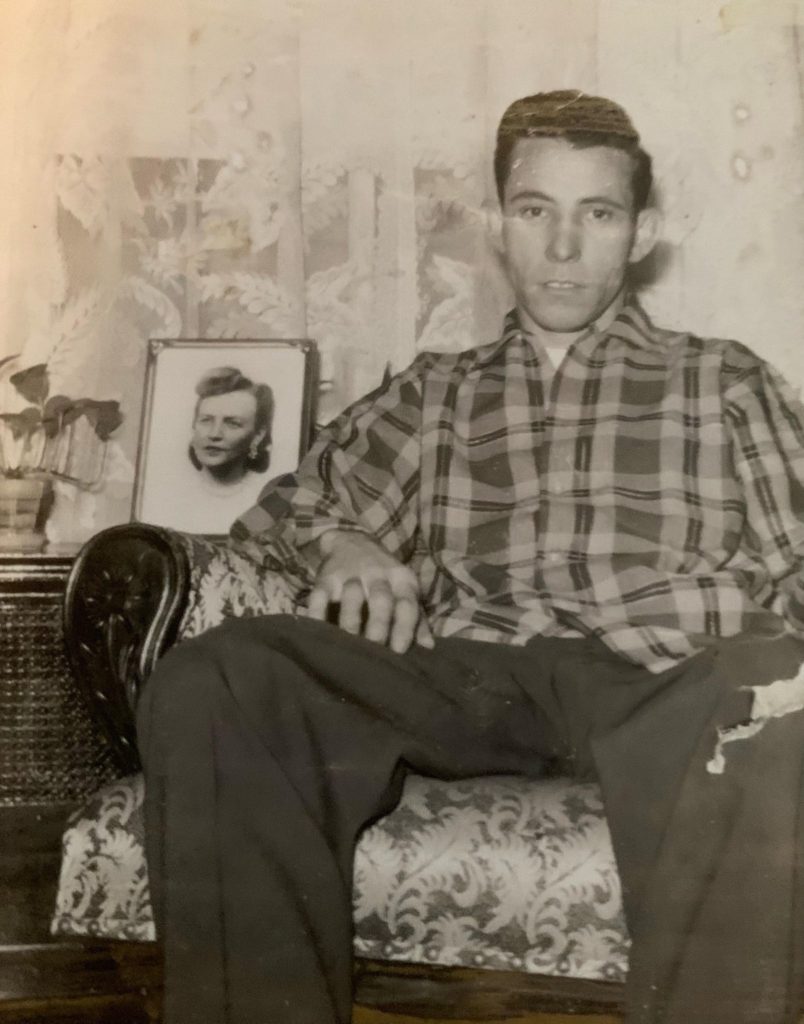
Throughout the twentieth century, the house appeared to change occupants with each decade. In 1962, the house was purchased by Daniel Vicks who owned the house for more than fifty years. In 2015, the house became the property of Christopher Griffith, Mr. Vicks’s grandson, who shares the home with partner Amanda Earp. The couple are presently if confessedly slowly trying to peel back the layers of a century and more of what has been covered up. It’s a charming home and Amanda is a talented and skilled gardener/landscaper, as anyone who has passed by the house can attest. As we know already from the many cottages in the Old West End, size has nothing to do with historic significance, and the Loomis-Vicks house is proof of that.
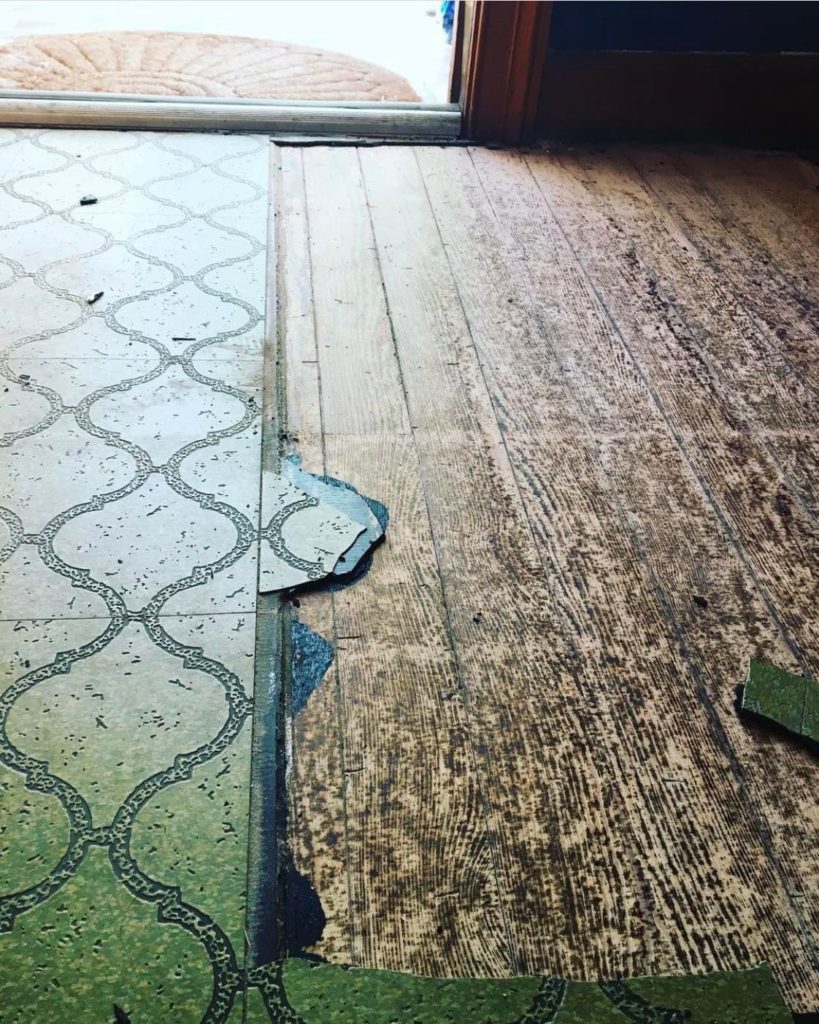
Sources:
Census and Vital records found at Familysearch.org
Images and vital information, including biographical sketches found at FindaGrave.com
Death notices and other information found in the Danville Register, Danville Bee archives at Newspapers.com. Excerpt of The Tucumcari News, 2 April 1910 found at FindaGrave.com
Census, Directory, Newspaper, and other information compiled by Paul Liepe
Photos of Crowell Motor Company and the Loomis family found in Images of America: Danville Revisited, by Clara G. Fountain and Gary Grant.
